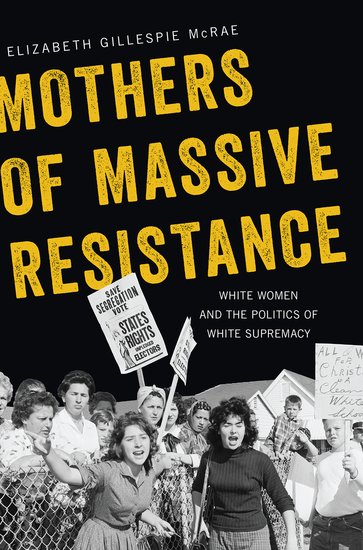Recently published by Oxford University Press, Elizabeth Gillespie McRae's Mothers of Massive Resistance: White Women and the Politics of White Supremacy takes a sharp look at mainstream, everyday segregationism: the segregationism of respectable white women. How, McRae asks, did those white women work to maintain segregation across the 20th century? What was their role in the battle to preserve Jim Crow? Why do many still support racist policies and politicians?
Unlike governors or legislators, white women couldn't directly enforce Jim Crow with state power. Unlike the Klan, they generally eschewed direct violence. Their sphere of authority was family, home, and those local spaces considered extensions of the domestic sphere—most notably public schools. Their work was daily, grassroots, and rarely glamorous. White women, McRae writes, were "segregation's constant gardeners."
Good white women, and especially good white mothers, "married gender roles [with a] devotion to racial segregation." They had a special obligation to police the color line where public and private life intersected: Midwives classified the race of the babies they helped bring into the world; public school teachers plucked students suspected of being mixed-race from their classrooms. Some educated women nourished the illusion of a more "affectionate segregation," in columns containing fond tales of their housemaids and childhood mammies.
White women's work to maintain a segregated America extended much further than we tend to believe, in both time and space. That work wasn't confined to the years between Brown v. Board of Educationand the Voting Rights Act; rather, McRae argues that it started in the 1920s, when white women employed as teachers, registrars, social workers, and midwives began to engage in the waged labor of racial classification, and it continues today.
Massive resistance—the wave of legislative, legal, and public protests against integration—is usually seen as a Southern project. Not true, McRae counters: In fact, white segregationist women in the South built alliances and shared strategies with women from California to Michigan who were also seeking to maintain white supremacy in their communities.
As McRae demonstrates persuasively, white women's efforts accounted for the "endurance and shape-shifting capabilities of white resistance," which kept segregation in place even as judicial and legislative victories seemingly cleared the way for racial equality.

